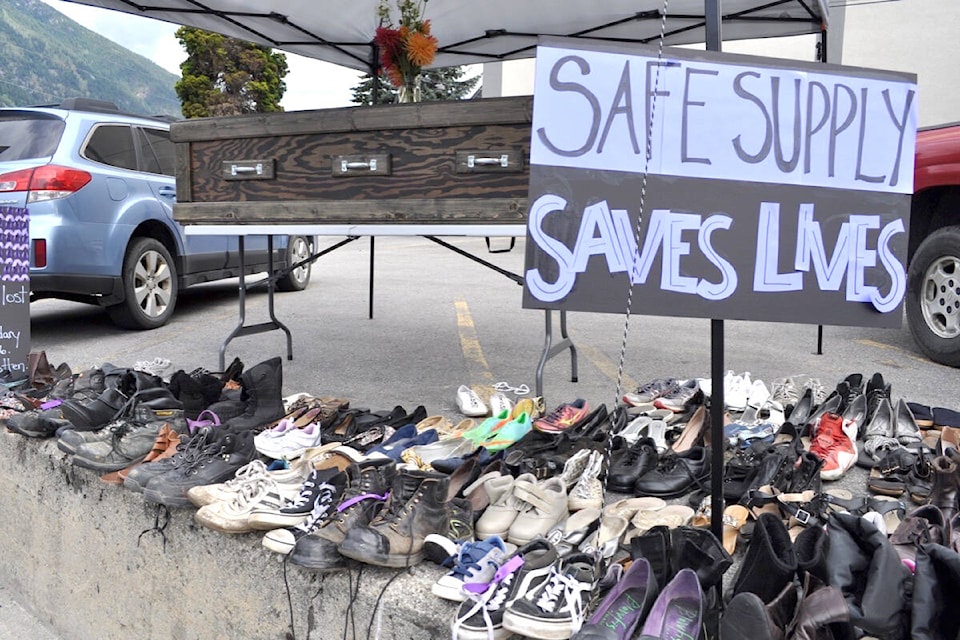by Amber Streukens
No drug courts, no mandated programming, no involuntary treatment. Decriminalization’s emphasis on autonomy and avoidance of alternative penalizing measures represents a significant shift in B.C.’s drug policy from shame towards dignity for people who use substances.
But while the move away from criminalization in itself may be bold, the details of this measure may fall short of transformative.
When we take a historical lens, this incremental policy shift seems far less extreme than the failed experiment of prohibition. Substance use is, and always has been, a health issue, not a criminal offence. Over a century of evidence reveals prohibition to be an abysmal failure. Drugs are now more readily available, cheaper, and more deadly than ever before.
Despite unfathomable resources poured into decades of drug wars, tangled layers of federal and international laws and policies, and countless devastated lives, families, and communities, prohibition has definitively failed to eliminate or even control drug use. Prohibition has, however, succeeded at entrenching racism, stigma, fear, violence, social control, and propelling this rampant public health emergency killing an average of six people a day in B.C., 22 in Canada, and nearly 300 in the United States as of 2021.
B.C.’s model of decriminalization does not alter any existing drug laws, is not legalization, is not universal nor comprehensive, and is not necessarily permanent. But it is hopefully a first step towards decriminalizing substance use. Promoting these measures as a bold anti-stigma tool, a means to reduce shame, and ultimately a strategy to reconnect people to health care seems to potentially oversell this strategy. The stigma that surrounds substance use has been deeply embedded and entrenched in all our social systems and structures over the last century. Will a three-year pilot project eliminate generations of messaging about drug use and people who use drugs? Will it disentangle and correct all the dehumanizing policy and systemic violence?
Many proponents of decriminalization argue that a cumulative threshold of 2.5 grams does not align with data on substance-use patterns and therefore does not meet the needs of people who use substances. A low threshold especially misses the mark for folks in non-urban settings, folks with substance-use dependencies, and folks with mobility challenges. It would seem, unfortunately, that those least impacted by prohibition have the most to gain under this new approach, whereas those most impacted may remain most at risk of criminalization, or re-criminalization. This does not seem equitable, and may not be effective.
Ongoing monitoring and evaluation will track the implementation and impacts of decriminalization. How this will unfold and how it will impact individuals and communities is yet to be seen. Many questions remain about how to measure success. If we overemphasize health outcomes such as reduced drug poisoning events, or increased treatment intake and retention rates, we risk completely missing the point and misrepresenting real outcomes. Simply decriminalizing possession will not displace a toxic drug supply. Referring people to care instead of court will not make treatment more accessible, more appropriate, or more effective.
Perhaps, instead, success should be measured in reduced contact with the criminal justice system; reduced social and structural stigma; improved stability, capacity, and feelings of belonging; increased participation in society, community, family, or economy?
Failure, too, may be possible. In the absence of accessible harm-reduction services, timely and person-centred recovery services, increased access to low-barrier housing, a safe supply of substances, widespread social inclusion of people who use substances, and a variety of other complex solutions and evolutions, we may not find the outcomes we seek, or perhaps we may even find unintended harmful consequences.
If the Iron Law of Prohibition holds true, there remains a risk that the drug supply will become increasingly potent to squeeze under this low threshold. We’ll need to adapt quickly, because changes in the drug supply can happen fast, and with devastating consequences. Hopefully Jan. 31 marks the first step in a long walk back from prohibition, towards the full decriminalization and emancipation of people who use substances. Hopefully we’re all in this together.
Amber Streukens is the harm reduction peer navigator at ANKORS.
READ MORE:
• What to know about B.C. decriminalizing possession of drugs for personal use – starting today
• 2,272 people died from poisoned drug supply in B.C. in 2022: coroner
• B.C. drug advocates cautiously optimistic about decriminalization
